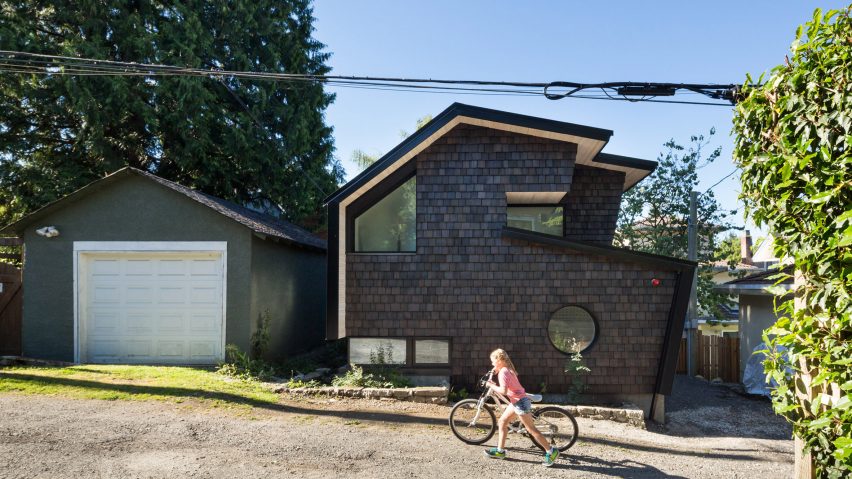
Faceted roof folds over shingle-clad laneway house in Vancouver
Canadian firm Campos Studio has designed an angular one-bedroom annex for a home in Vancouver, creating more space for a three-generation family.
Campos Studio designed Laneway House in Point Grey so the entire family could be closer together without everyone moving to another home.
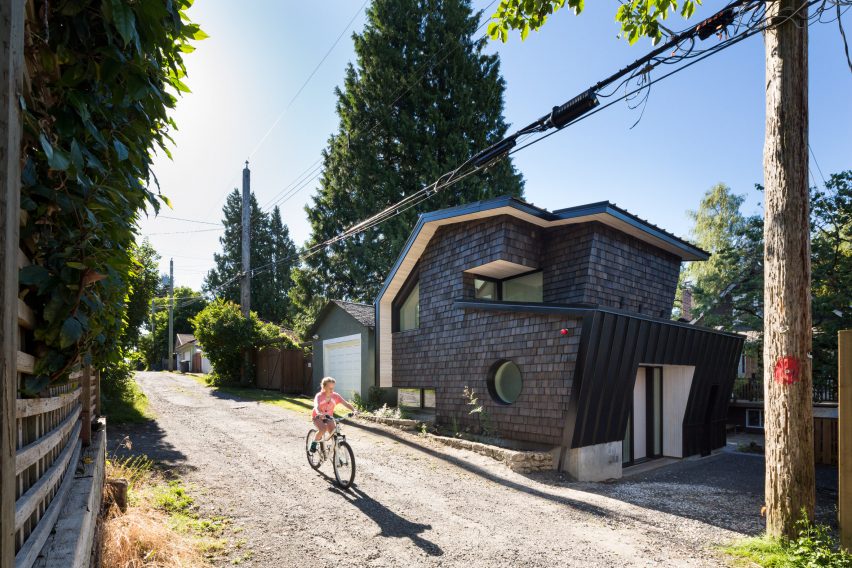
"The goal of this project was to reunify a Japanese-Canadian family in a way that would allow them to support each other across three generations," said the studio.
"By developing the project on the family property, the building sidesteps Vancouver's substantial land values while addressing the need to re-engage family structures so that care can be provided for ageing family members."
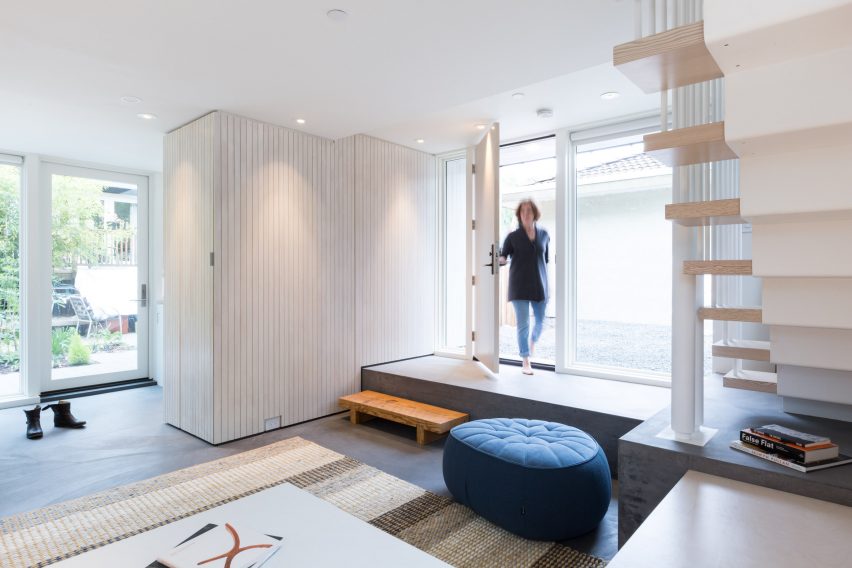
Situated in one the city's residential neighbourhoods close to its Downtown district, the project is typical of the area where smaller units – known as laneway houses – are built to the rear of pre-existing lots and open onto a back lane.
The buildings are often separated from the main larger dwelling by a garden, with the larger roads running past the front of the property.
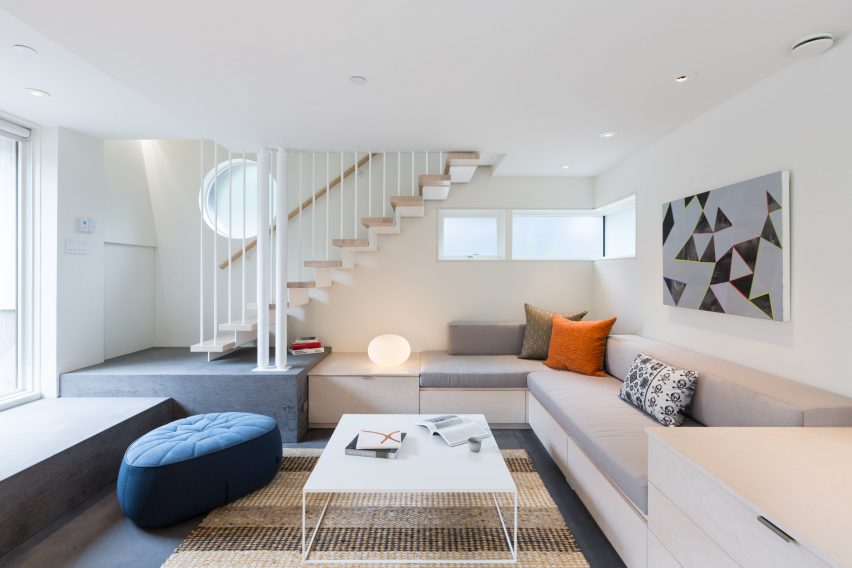
"Vancouver's laneway program is one way in which the city has attempted to address the affordability crisis," said Campos Studio. "The program introduces soft density into the existing single-family residential urban fabric."
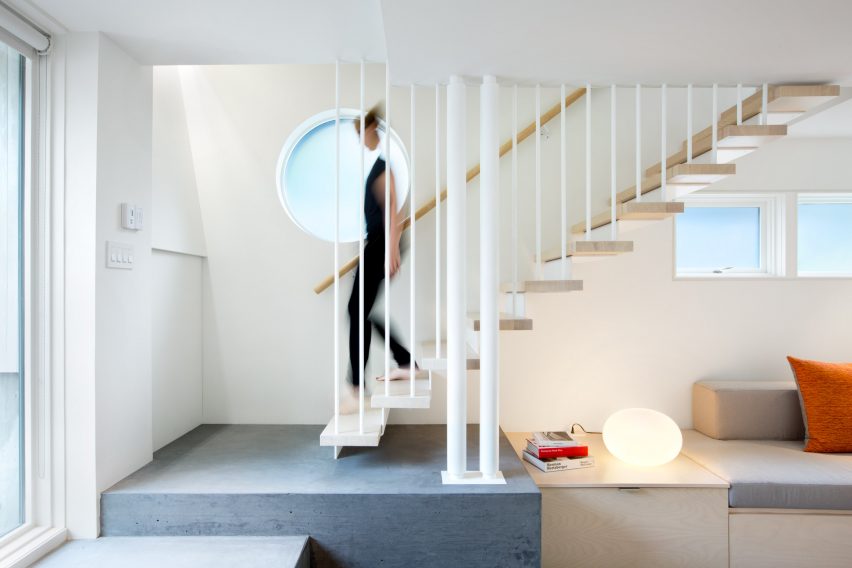
"This has prompted the development of a typology and a rethinking of the ability of small spaces to provide an efficient liveable environment within the sprawling Canadian urban context," the studio added.
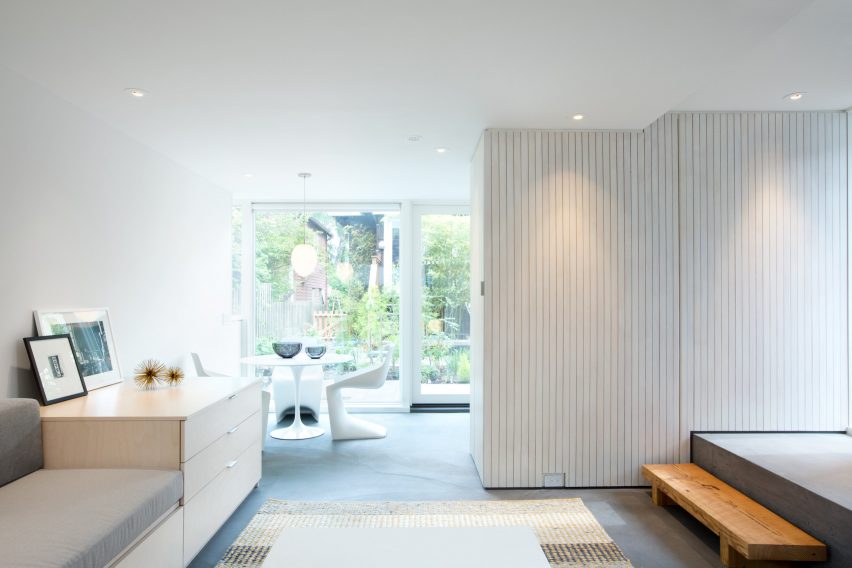
The modest unit measures 582 square feet (52 square metres) across two storeys, and has one bedroom upstairs.
The relatively small footprint guides the internal layout, which comprises a sitting area with built-in benches and a storage closet off the fir-clad front door. A galley kitchen and eating nook complete the ground floor, which is covered in oil-stained concrete.
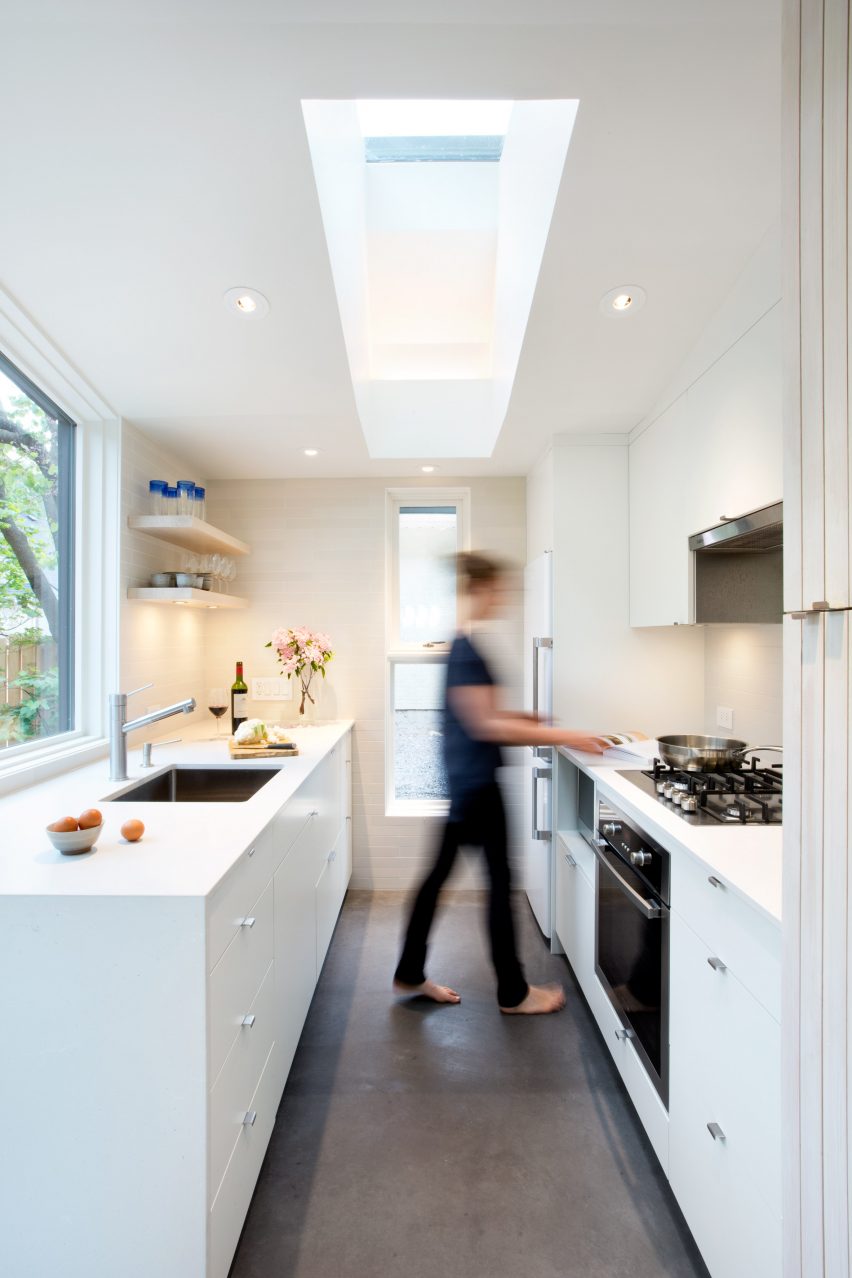
Upstairs, the bedroom and bathroom feature light wood floors to match the stairs. A semi-covered deck overlooks a gravel road, with a backyard linking to the larger residence on the other side.
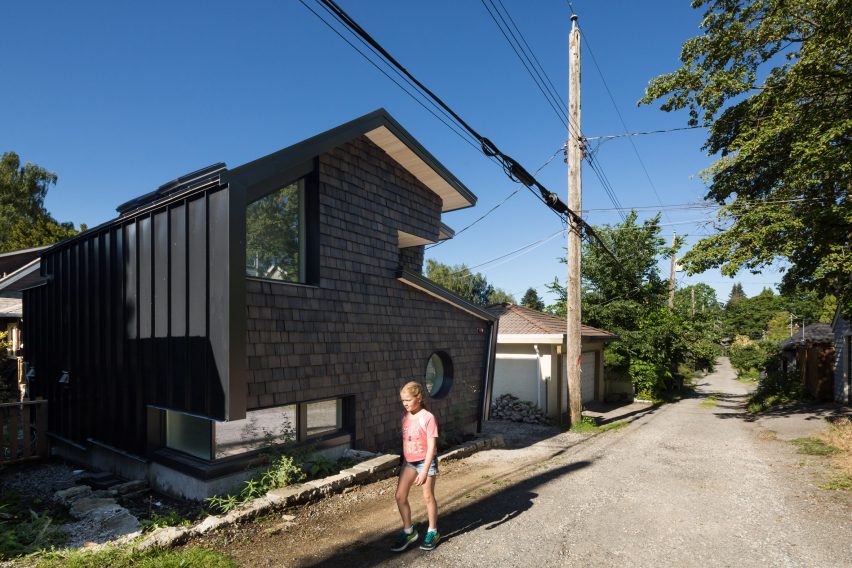
Wood shingles and black metal were both used to clad the exterior, to suit the region's costal temperate rainforest. These materials contrast each other, and accentuate the home's angled exterior walls and roofline.
Natural light floods the interior, with white and light-wood surfaces throughout. The design draws upon the Japanese design references that include a strong connection to nature and communicating imperfection.
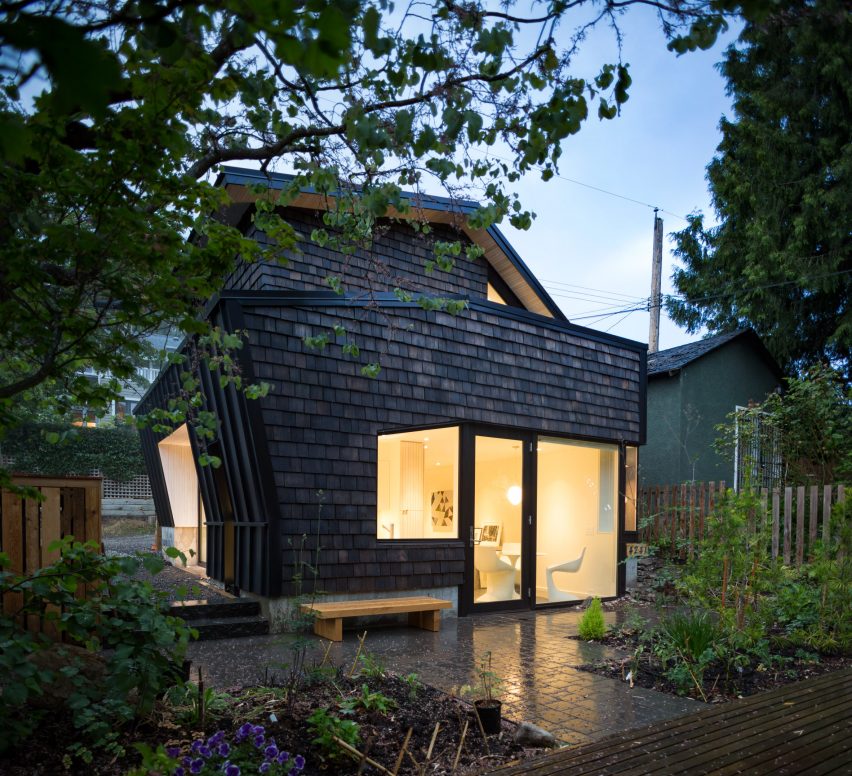
"These reoccurring contrasting elements attempt to create a space that evokes a simplicity and beauty that the Japanese tradition sees as inherent within opposition and unity," said the studio.
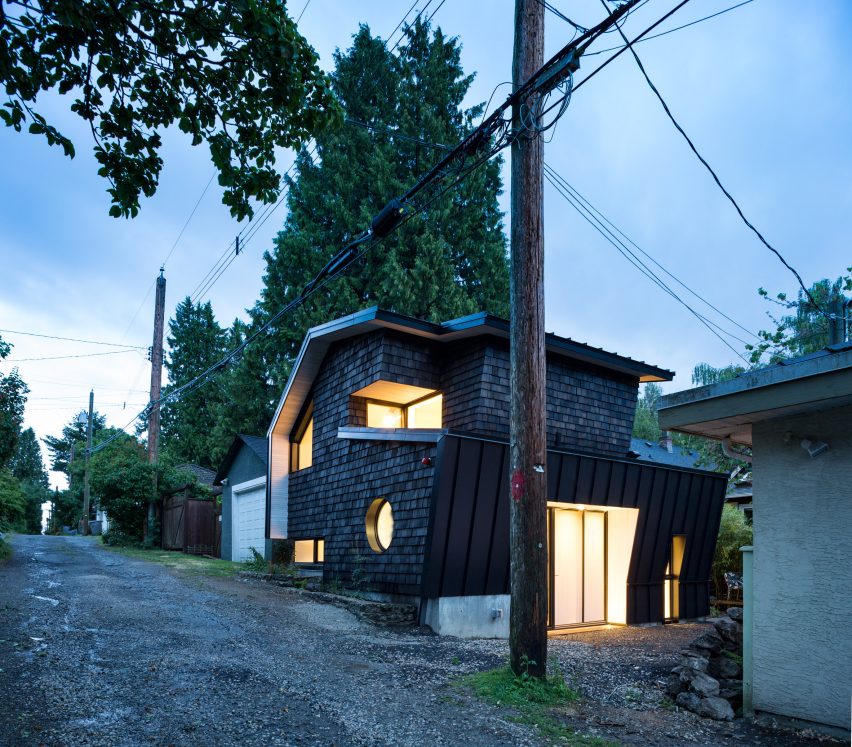
Founded in 2015, Campos Studio is led by Javier Campos, Alix Pratlong and Czarina Ray. The small interdisciplinary design firm is based in Grandview Woodlands near Vancouver's Strathcona area, the oldest residential neighbourhood in British Columbia.
Photography is by Ema Peter.